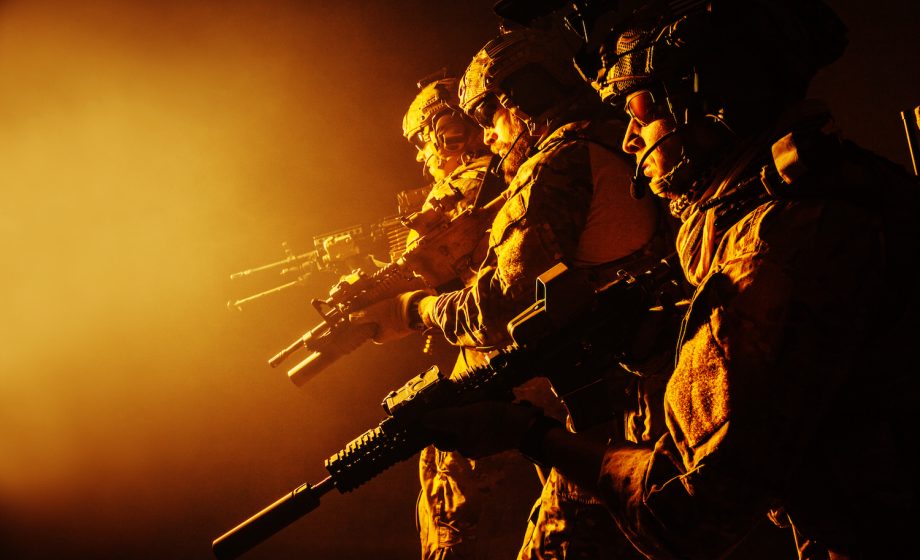
Drones are nothing new to warfare.
UAVs (Unmanned Aerial Vehicles) have been in operation during the last few wars including the aptly named Predator Drone . This was especially in post 9/11 operations. Initially used for surveillance, it did not take long for nations to start fixing missiles to them. This allowed them to act almost autonomously, sometimes to devastating effect. In November 2008 a drone struck a wedding party with a missile and killed 37 civilians. Twenty three of whom were children.
These incidents have put a bit of a dark shadow over drone use but they display huge benefits. Even ISIS fighters have recently been using recreational drones to attack US troops near Raqqa. They attach small 40mm grenade-sized munitions to the drone and fly it near troops or emplacements, before detonating the explosive. Though rudimentary, it does give an indication for the future of warfare.
New flying techniques
Recent developments, however, are set to see this ramped up to a far more modern and efficient level. The United States’ DARPA (Defense Advanced Research Projects Agency) has been consulting robotics engineers, artificial intelligence programmers and computer scientists. They seek to create swarms of drones to support infantry personnel in the field. A far cry from strapping a grenade to a commercial drone purchased off Amazon. These drones will be designed by some of the world’s largest and wealthiest military interests. Though it is an American-led programme, many European nations have also displayed very strong interest in this area. The United Kingdom and France are among the most interested. Both have lots of recent experience in using drones in a limited capacity on the battlefield.
DARPA has asked these experts for specific ideas for drones, tactics and technologies that could allow for swarms of up to 250+ drones. They would support infantry units in built-up areas over long periods of time, being able to operate for at least 6 hours.
Technical drawbacks
Their chief problem at present isn’t building the actual drones. Wealthy nations like the USA, the UK, and France are quite capable of buying large numbers of drones and giving them out to their troops. The issue is finding a way to both control and manage such large numbers of drones on the battlefield. At present US Marines use remote controlled drones for recon purposes in battle, but they must be directly controlled by an operator. Having a large number of autonomous drones at any one time whilst undertaking their tasks automatically without crashing into each other is another matter entirely.
Artificial Swarm Intelligence
This is the realm of the fledgling field of Artificial Swarm Intelligence. This field of computer science uses nature as one of its chief inspirations. The study of Ants, Bees, Fish and Locusts – nature’s great swarmers – are their chief inspiration. Researchers in this field seek to bring to life the old adage that the whole is more than the sum of its parts.
DARPA wants to create an ‘advanced human-swarm interface’. They want the swarm systems to perform ‘in an agile way, so future operators will have the tools they need to outsmart and outperform urban adversaries’.
It’s a large, well-funded move into a robotic warfare direction. And it’s still breaking new ground. In the very near future we will see more robotic soldiers on the frontline than organic ones. It’s only a matter of time until these technologies and tactics trickle down to less organised, less wealthy or less advanced militaries. We can almost guarantee that our adversaries both domestic and international will soon be using similar methods. This will lead to large drone on drone battles which will surely be a thing to behold.
Fighting drones
Even before this stage, though, anti-drone technology has been advancing just as fast as drone technology itself. Fences, flying nets, explosives, you name it. Yet, France had one of the more outside-the-box ideas which against all expectations has actually worked. French Police, fearing that ISIS would copy their 40mm drone attacks within France itself to commit terror attacks, have actually trained eagles to attack drones in the air. Eagles. And it works. The French Air Force has also copied this method for protecting the air space over their bases from prying civilian drones . One thing is for certain – war is about to get very, very weird.
Whatever the trials and drawbacks, this move towards drone-enhanced soldiers is a big step in a futuristic direction. Hopefully it will reduce the casualties caused as a result of wars and counter-insurgencies. And maybe help to combat the spate of terror attacks which have long plagued the continent. We should soon see French troops flanked by dozens, if not hundreds, of advanced drones acting of their own accord to allow soldiers to control the area.
If we can get them to stop crashing into each other.

